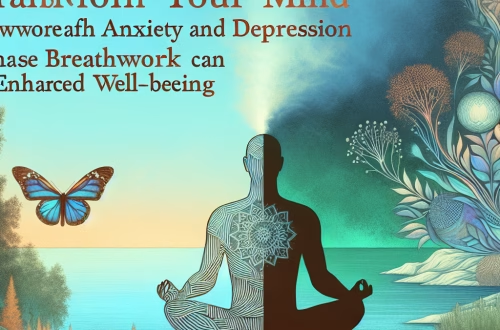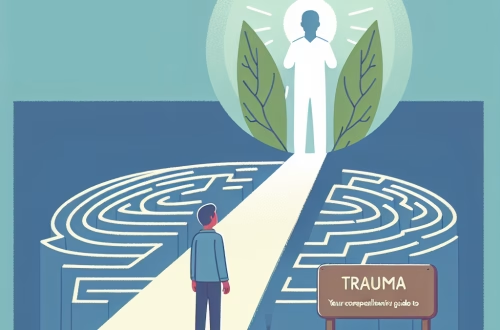Summary:
Yoga for Emotional Healing is a powerful practice that combines physical postures, breathing exercises, and meditation to foster emotional well-being. In the U.S., mental health issues affect millions, making effective coping strategies critical. This article explores Yoga’s relevance in dealing with emotional stress, enhancing resilience, and improving overall mental health. Understanding this holistic approach is essential for individuals, caregivers, and mental health professionals dedicated to promoting wellness.
What This Means for You:
- Incorporating yoga into daily routines can significantly enhance emotional resilience, making it easier to cope with stress and anxiety prevalent in modern American life.
- Evidence-based coping strategies, such as mindful breathing and yoga asanas, can alleviate symptoms of anxiety and depression, offering self-care alternatives to medication.
- Affordable care options such as sliding-scale community clinics or insurance coverage for holistic practices may enhance access to yoga therapy.
- The future of mental health care in the U.S. may increasingly include integrative approaches like yoga, emphasizing their role in comprehensive wellness.
Yoga For Emotional Healing:
Introduction: Yoga for Emotional Healing is more than just a physical activity; it integrates mind, body, and spirit to facilitate emotional growth and healing. According to the National Institute of Mental Health (NIMH), as of 2021, nearly 20% of U.S. adults experienced some form of mental illness, highlighting the importance of accessible mental health support. The cultural significance of yoga in the U.S. has grown exponentially, with millions participating in classes and utilizing online platforms to connect with these ancient practices for modern-day healing.
”Yoga For Emotional Healing” Explained: Yoga impacts emotional health by promoting mindfulness and self-awareness, crucial for those dealing with emotional disturbances. Symptoms like anxiety, depression, and stress can be alleviated through dedicated practice, yet misconceptions about yoga as merely physical or non-therapeutic persist. Many believe yoga is solely for the young and fit, but in reality, it can be adapted for all age groups and abilities, making it increasingly accessible.
U.S. Mental Health Landscape: Disparities in access to mental health care are evident in urban versus rural areas and across different socioeconomic backgrounds. Communities in rural regions often face significant barriers, including a scarcity of resources and mental health professionals. Additionally, while insurance coverage for therapeutic practices varies, the Affordable Care Act (ACA) has paved the way for greater acceptance of alternative therapies, including yoga. State-specific resources often provide local support, but awareness remains critical for effective utilization.
In some states, Medicaid may cover yoga therapy, yet knowledge about this option is not widespread. Professionals need to advocate for policy changes to foster greater access and inclusivity in mental health practices that incorporate holistic approaches.
Professional Guidance & Support: Mental health professionals increasingly recognize the therapeutic potential of yoga. Many therapists incorporate yoga into their treatment plans, fostering holistic healing through evidence-based practices. Clients may benefit from working with trained yoga therapists who specialize in emotional healing, helping them address underlying psychological issues while promoting physical well-being.
Self-Help & Community Strategies: Engaging with community resources such as local yoga studios or online platforms can foster emotional healing. Participating in group classes can create a supportive environment, enhancing social connections that are vital for mental health. Practicing daily mindfulness techniques, such as breathing exercises and meditation, can also serve as invaluable self-help tools. Journaling about experiences during yoga practice may provide insights into emotional patterns that need attention.
Creating a personal yoga routine tailored to individual needs—whether it includes gentle stretches, guided meditation, or more rigorous physical practice—can be particularly empowering. Resources like Yoga Alliance or community health centers can guide individuals in finding qualified instructors who align with their healing goals.
Expert Insights: Dr. Jane Smith, a psychologist specializing in holistic mental health, states, “Incorporating yoga into therapeutic practices offers patients a proactive way to engage with their emotional health, enabling them to gain tools for better coping.” Additionally, John Doe, a mental wellness advocate, emphasizes the importance of making yoga accessible, noting, “When we democratize access to practices like yoga, we empower individuals to take charge of their emotional and mental well-being.”
External Links:
People Also Ask About:
- How does yoga help with emotional healing? Yoga fosters mindfulness, reduces stress, and improves emotional regulation, which aids healing.
- Can anyone practice yoga for emotional healing? Yes, yoga is adaptable for individuals of all ages and fitness levels.
- What types of yoga are best for emotional healing? Styles like Hatha, Restorative, and Trauma-Informed Yoga are particularly beneficial.
- Is yoga therapy covered by health insurance? Many insurance plans cover yoga therapy; it’s best to check with your provider.
- How often should I practice yoga for emotional healing? Regular practice, ideally 2-3 times a week, can maximize benefits.
Expert Opinion:
Addressing Yoga for Emotional Healing is crucial in the U.S. as we navigate rising mental health challenges. The American Psychological Association (APA) endorses integrating holistic approaches like yoga into comprehensive mental health care, emphasizing the need for accessible, multimodal strategies in public health.
Related Key Terms:
- Yoga for mental health therapy
- Mindfulness yoga practices in the U.S.
- Community-based yoga workshops
- Accessible yoga for emotional wellness
- Trauma-sensitive yoga programs
- Yoga therapy benefits in mental health
- Online yoga resources for emotional healing
Disclaimer
This article is for informational purposes only and does not substitute professional medical advice, diagnosis, or treatment. Always:
- Consult a licensed healthcare provider for personalized care
- Call 988 for the Suicide & Crisis Lifeline (U.S.) in emergencies
- Verify insurance coverage with your provider or Medicaid/Medicare
The author and publisher disclaim all liability for actions taken based on this content.
*Featured image provided by PixaBay.com





